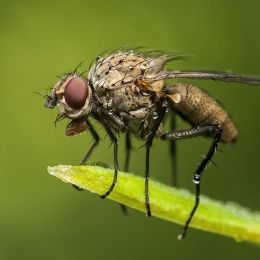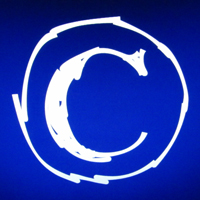- photo contests ▼
- photoshop contests ▼
- Tutorials ▼
- Social ▼Contact options
- Stats ▼Results and stats
- More ▼
- Help ▼Help and rules
- Login
11 - Oversampling (Antialiasing) - Blender Tutorial

A computer generated image is made up of pixels, these pixels can of course only be a single colour. In the rendering process the rendering engine must therefore assign a single colour to each pixel on the basis of what object is shown in that pixel. This often leads to poor results, especially at sharp boundaries, or where thin lines are present, and it is particularly evident for oblique lines. To overcome this problem, which is known as Aliasing, it is possible to resort to an Anti-Aliasing technique. Basically, each pixel is 'oversampled', by rendering it as if it were 5 pixels or more, and assigning an 'average' colour to the rendered pixel. The buttons to control Anti-Aliasing, or OverSAmple (OSA), are below the rendering button in the Render Panel (Render Panel.).
submitted: 5 years and 3915 days ago
12 - The Render Options - Blender Tutorial

We know that around the world, our users have PC's of widely varying power. Rendering is the process in CG that can chew up CPU and disk space like no tomorrow. Especially in corporate environments, it is easy to fill up terabyte servers by uploading ten hour-long DV tapes and doing some editing. So, there are lots of options try to shoehorn a big job into a small PC by providing you with multiple sets of options that chunk up the work as best we can, while still preserving image integrity.
This page discusses the main options found on the Render panel, and subsequent pages give you more.
submitted: 5 years and 3915 days ago
13 - RenderPass In Detail - Blender Tutorial
14 - Rendering Layers - Blender Tutorial

Renderlayers are used to separate your composite image into layers. Use RenderLayers for a specific reason - such as creating depth of field, relighting isolated elements within the image via a normal pass, adding a colorcast to specific portions of the image, etc. The keyword here is isolation. Renderlayers allow you to dissect, effect and or correct individual elements or groups within your composition before outputting your final render. This saves you from endlessly re-rendering your scene just to find out whether a correction is going to work or not.
submitted: 5 years and 3915 days ago
15 - Real Time Dome Rendering - Blender Tutorial
16 - Combination with Hair Particles - Blender Tutorial
17 - Combination With Armatures - Blender Tutorial

You can use goals to either pin certain parts of a mesh to a location, or restrict the amount of movement away from the defined goal. So you may for example use armatures to animate your object but use a Goal group to define areas that are flexible and that react to Soft Body deformation. Since a simulation can be set up to take into account mass and gravity, you can easily create animated objects with realistic physical behavior using the Soft Body solver.
submitted: 5 years and 3918 days ago
18 - Soft Body - Simple Examples - Blender Tutorial
19 - Soft Body - Collisions - Blender Tutorial

There are two different collision types that you may use: collision between different objects and internal collision. We should set one thing straight from the start: the primary targets of the collision calculation are the vertices of a Soft Body. So if you have too few vertices too few collision takes place. Secondarily, you can use edges and faces to improve the collision calculation.
submitted: 5 years and 3918 days ago











